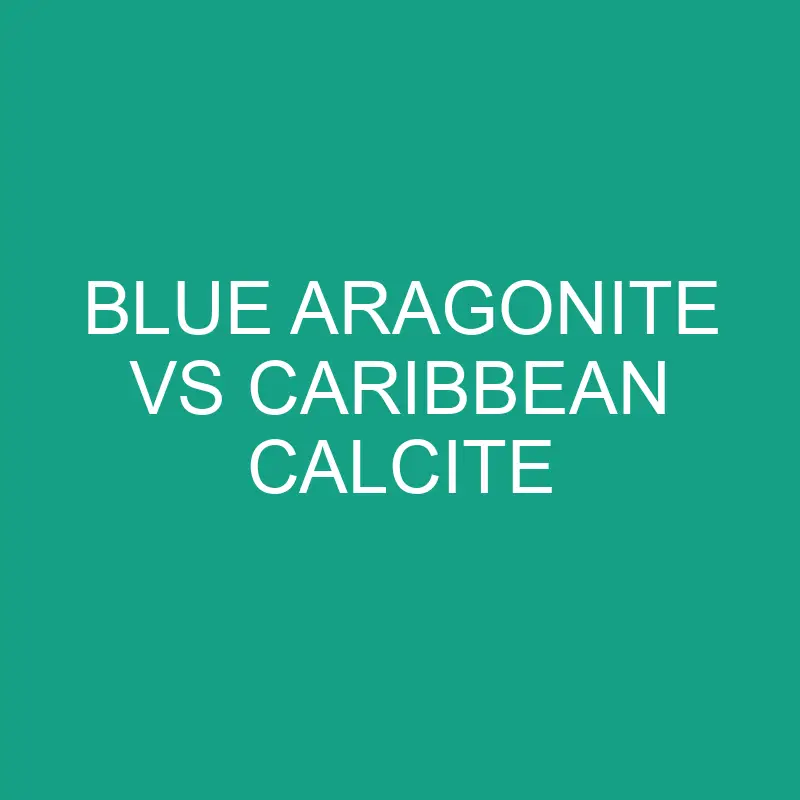Navigating the Seas of Tranquility
In the vast and mesmerizing world of crystals, Blue Aragonite and Caribbean Calcite stand out as enchanting gems that beckon seekers into the depths of tranquility. With their soothing hues and metaphysical properties, these crystals have garnered attention for their potential to bring a sense of calm and harmony. In this exploration, we will dive into the distinct characteristics, geological origins, metaphysical symbolism, and common uses of Blue Aragonite and Caribbean Calcite, navigating the seas of serenity within these captivating crystals.
Post Contents
Blue Aragonite: The Gentle Waves of Calm
Origins and Geological Background:
- Composition: Blue Aragonite is a carbonate mineral, a polymorph of calcium carbonate, and is part of the aragonite group.
- Color and Appearance: It exhibits various shades of blue, ranging from light sky blue to deeper turquoise, often with a pearly luster.
- Formation: Blue Aragonite forms in sedimentary environments, particularly in caves and hot springs. It is also found in the shells of certain marine organisms.
- Locations: Deposits of Blue Aragonite are found in locations such as Spain, Mexico, and the United States.
Physical Properties:
- Structure: Blue Aragonite can occur in various crystal habits, including prismatic, acicular, or as botryoidal aggregates.
- Transparency: It is typically translucent to opaque, and its color can be affected by the presence of impurities.
Metaphysical Symbolism:
- Calm and Emotional Healing: Blue Aragonite is associated with promoting a sense of calm and tranquility. It is believed to aid in emotional healing, soothing anxiety and stress.
- Throat Chakra Activation: It is often linked to the throat chakra, supporting clear communication and expression of one’s emotions.
Uses:
- Meditation and Relaxation: Blue Aragonite is favored in meditation practices for its calming energy. It is often used as a stress-relief crystal, helping individuals achieve a state of relaxation.
- Home Décor: Due to its soothing color and gentle energy, Blue Aragonite is used as a decorative element in homes and offices.
Caribbean Calcite: The Oceanic Symphony of Serenity
Origins and Geological Background:
- Composition: Caribbean Calcite is a combination of Blue Calcite and brown Aragonite, creating a unique blend of calming and grounding energies.
- Color and Appearance: It features a delightful mix of light blues and soft browns, resembling the colors of tropical waters and sandy beaches.
- Formation: Caribbean Calcite is formed through a process involving the combination of Blue Calcite and brown Aragonite in specific geological conditions.
- Locations: This distinctive calcite variety is often associated with mines in Pakistan.
Physical Properties:
- Structure: Caribbean Calcite typically occurs in massive formations with a banded or layered appearance, showcasing the interplay of blue and brown hues.
- Transparency: It is usually translucent to opaque, with a gentle and inviting aesthetic.
Metaphysical Symbolism:
- Harmony and Balance: Caribbean Calcite is believed to bring a sense of harmony and balance. It combines the calming properties of Blue Calcite with the grounding energies of brown Aragonite.
- Emotional Healing: This crystal is thought to support emotional healing, helping individuals navigate through challenging emotions with a sense of tranquility.
Uses:
- Meditation and Inner Peace: Caribbean Calcite is used in meditation practices to promote inner peace and balance. Its oceanic colors evoke a connection to the calming energies of the sea.
- Decorative Pieces: Beyond its metaphysical properties, Caribbean Calcite is also valued for its aesthetic appeal and is used in decorative pieces such as spheres and carvings.
Comparative Analysis: Blue Aragonite vs. Caribbean Calcite
1. Color and Appearance:
- Blue Aragonite: Exhibits shades of blue, ranging from light sky blue to deeper turquoise, often with a pearly luster.
- Caribbean Calcite: Features a mix of light blues and soft browns, resembling the colors of tropical waters and sandy beaches.
2. Geological Origins:
- Blue Aragonite: Forms in sedimentary environments, including caves, hot springs, and marine organisms.
- Caribbean Calcite: Formed through a combination of Blue Calcite and brown Aragonite in specific geological conditions, often found in mines in Pakistan.
3. Metaphysical Symbolism:
- Blue Aragonite: Associated with calmness, emotional healing, and throat chakra activation.
- Caribbean Calcite: Linked to harmony, balance, and emotional healing, combining the calming properties of Blue Calcite with grounding energies.
4. Uses:
- Blue Aragonite: Favored in meditation practices for calming energy and used as a stress-relief crystal. Also used in home décor.
- Caribbean Calcite: Used in meditation for inner peace and balance. Valued for its aesthetic appeal in decorative pieces.
Conclusion: Sailing the Seas of Serenity
In the mystical waters of crystal exploration, Blue Aragonite and Caribbean Calcite invite individuals to sail the seas of serenity, each offering a unique blend of calming energies and metaphysical symbolism. Whether it’s the gentle waves of calm from Blue Aragonite or the oceanic symphony of harmony from Caribbean Calcite, these crystals resonate with those seeking tranquility and emotional balance. The choice between Blue Aragonite and Caribbean Calcite often depends on personal preferences, with each crystal serving as a compass in navigating the depths of inner peace. As these crystals continue to find their places in the realms of meditation, décor, and holistic well-being, they stand as beacons, guiding seekers towards the serene shores of crystal energy.

